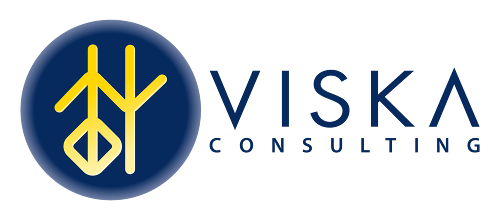Have you read the latest from CNBC? Employee happiness is at a three-year low. This startling revelation from October 2023 isn’t just a statistic—it’s a wake-up call for business leaders everywhere. As you sip your morning coffee and scan through your company’s latest performance metrics, I want you to ponder this: How does your employees’ happiness intertwine with your company’s success?
Employee happiness isn’t just about creating a pleasant workplace. It’s about fostering an environment where retention, productivity, and business success thrive. In a world where job satisfaction is dwindling, understanding and nurturing this happiness has never been more crucial. So, let’s dive into why your employees’ smiles might be the key to your company’s success.
The Current State of Employee Happiness
The trends are clear: workers are increasingly dissatisfied. But what does this mean for your business? Recent studies, including those by Gallup and Pew Research Center, have painted a vivid picture of the modern workforce’s state of mind. For instance, Gallup’s 2023 State of the Global Workplace report found that only 20% of employees are engaged at work. This lack of engagement isn’t just a HR issue—it’s a bottom-line issue.
But why this growing discontent? Is it the post-pandemic work culture shift, or perhaps the evolving work-life balance expectations? As a business leader, these are the questions you should be asking. Reflect on your organization: Are there murmurs of dissatisfaction? Are your employees less enthusiastic than they used to be? The answers to these questions are more than just indicators of mood—they’re predictors of your company’s health and future performance.
In this climate, standing out as a company that truly values employee happiness isn’t just commendable—it’s essential. It’s about understanding that each employee’s happiness can ripple out, affecting everything from their daily productivity to your company’s overall reputation.
Understanding the Link Between Employee Happiness and Productivity
Now, let’s connect the dots between a happy and productive employee. It might seem intuitive, but hard data back the correlation. According to a study by the University of Oxford’s Saïd Business School, workers are 13% more productive when happy. But why is this the case?
Think about it: when employees are satisfied, they’re more engaged, creative, and less likely to take sick days. A happy employee is not just someone who shows up for work but contributes positively, thinks innovatively, and collaborates effectively. They’re the kind of employees who don’t just meet targets; they exceed them. So, as a leader, ask yourself: “Are my employees genuinely satisfied, or are they just going through the motions?”
Happiness in the workplace creates a virtuous cycle. Content employees foster a positive work environment, attracting talent and retaining existing staff. This isn’t about occasional team-building activities or free coffee in the break room. It’s about building a culture where every employee feels valued and heard. This leads us to our next crucial point: the power of listening.
The Power of Listening and Acting on Employee Suggestions
You’ve probably heard the saying, ‘A happy employee is a loyal employee.’ But how do you make an employee happy? The answer lies in two words: Listen and Act. Consider the story of a tech giant like Google, which encourages employees to spend 20% of their work time on personal projects. This approach has led to innovations like Gmail and AdSense. What can we learn from this? Employees who feel their ideas are valued are more invested in their work and the company’s success.
It is fundamental to create a culture of open communication where employees feel comfortable voicing their thoughts and opinions. This means more than just having an open-door policy. It involves actively seeking out employee feedback and, more importantly, acting on it. Whether it’s about improving workplace conditions or new product ideas, showing your team that their input can lead to real change is empowering.
Remember, it’s not just about what you do with the feedback but how you respond to it. Even when you can’t implement every suggestion, acknowledging and appreciating the effort goes a long way. So, when did you last ask your employees for their input and genuinely consider it? The answer to this question might be the key to unlocking a wealth of untapped potential within your organization.
Strategies to Enhance Employee Happiness
So, how do we turn the tide and boost employee happiness? It’s not just about grand gestures; sometimes, the smallest changes can have the most significant impact. Here are some practical tips:
- Promote Work-Life Balance: Encourage flexible working hours or remote working options. Employees who feel trusted to manage their time often work more effectively.
- Recognition and Reward: Regularly acknowledge and reward hard work and achievements. This doesn’t always mean financial incentives; sometimes, a public thank-you or an Employee of the Month award can be just as powerful.
- Resources for Growth: Offer opportunities for professional development. This could be through training programs, workshops, or even a budget for external courses. When employees feel their growth is valued, their loyalty to the company strengthens.
- Health and Wellness Initiatives: Consider implementing wellness programs or mental health days. A healthy employee is a happy employee.
- Employee Input and Actionable Feedback: Involve employees in decision-making by actively seeking their suggestions and feedback. Employees feel more invested and valued when they are given a voice in shaping their work life. Demonstrating that their opinions lead to tangible changes can significantly boost morale and commitment.
But remember, the key lies in authentic implementation. These strategies should not feel like a checklist but a genuine effort to improve the workplace. As a leader, your role is to lead by example. Ask yourself: “Am I fostering a culture where these practices are encouraged and actively practiced?”
Connecting Employee Happiness to Customer Satisfaction
Now, let’s talk about the external impact of employee happiness—specifically, customer satisfaction. The Harvard Business Review highlights a direct link between employee well-being and customer satisfaction. Essentially, happy employees lead to happy customers. Why? Because the attitude and energy of your employees are contagious.
Think about it: When your employees are enthusiastic and committed, this reflects customer interactions. They are more likely to go the extra mile, provide better service, and engage positively with customers. This doesn’t just improve customer experience; it builds customer loyalty.
Moreover, satisfied employees often have a deeper understanding of the company’s products or services, translating into more effective customer solutions. Their pride in their work is evident and can be a powerful tool in building a strong brand image.
So, as you strategize your customer experience improvement, consider starting from within. By fostering a culture of happiness among your employees, you’re indirectly polishing every customer interaction your business has. Ask yourself, “Do my employees’ experiences reflect the kind of customer experience I aim to provide?”
Measuring and Monitoring Employee Happiness
Understanding employee happiness in your organization is crucial, but how do you measure something so subjective? The key is using quantitative and qualitative methods to get a comprehensive view.
- Regular Surveys: Implement annual or bi-annual surveys to gauge employee satisfaction. Include questions that cover various aspects like work environment, leadership, and personal growth.
- Pulse Surveys: In addition to the regular surveys, conduct short, frequent pulse surveys. These can provide quick insights into the current mood of the workforce and help you respond more promptly.
- One-on-One Meetings: Encourage managers to meet with their team members regularly. This can provide deeper insights into individual employee experiences.
- Exit Interviews: Conduct exit interviews to understand why employees leave. This feedback is often invaluable in identifying areas for improvement.
Remember, the goal is to collect data and act on it. Use the insights you gain to make informed decisions and implement changes where necessary. Continuously improving and adapting your strategies based on feedback shows your commitment to creating a happy workplace.
Conclusion
As we wrap up, let’s revisit the key points. Employee happiness is not just a nice-to-have; it’s a crucial driver of productivity, retention, and customer satisfaction. By listening to your employees, acting on their suggestions, and implementing strategies to enhance their happiness, you’re not only investing in their well-being but also in the health and success of your business.
So, as a business leader, I challenge you to take a proactive approach to employee happiness. Evaluate your current practices, listen to your team, and be ready to make changes. The benefits of a happy workforce extend far beyond the walls of your office – they reach your customers and the very heart of your business success.
Remember, happy employees lead to happy customers, and happy customers lead to a thriving business. It’s a cycle of success that starts with you.
Empower Your Team with VISKA: Unlock the Door to Employee Satisfaction and Increased Revenue
Do you need guidance in determining the most impactful questions that will resonate with your team? Are you seeking expert assistance in navigating through the nuances of employee engagement and satisfaction? VISKA is your ideal partner in this endeavor. Our expertise lies in identifying the issues and crafting tailored solutions that align perfectly with your unique organizational needs.
Don’t let uncertainty hold you back. Reach out to VISKA today, and together, let’s unlock the potential of your workforce, foster a thriving work environment, and set your organization on a path of success and growth. Remember, the right questions can open doors to endless possibilities. Contact VISKA – where your journey to enhanced employee satisfaction and productivity begins.

